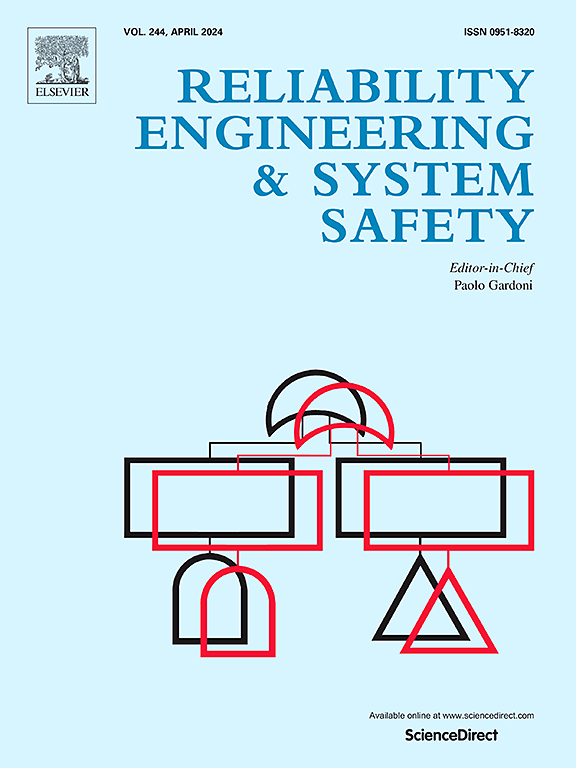贝叶斯框架下具有动态协变量的多元退化数据建模
IF 9.4
1区 工程技术
Q1 ENGINEERING, INDUSTRIAL
引用次数: 0
摘要
降解数据对于确定高端产品和系统的可靠性至关重要,特别是当涉及多个降解特性(dc)时。现代降解研究不仅测量这些特性,而且还记录动态系统使用情况和环境因素,如温度、湿度和紫外线照射,称为动态协变量。目前的研究大多集中在具有动态协变量的单个DC或具有固定协变量的多个DC上。本文提出了一个包含动态协变量的多dc数据分析贝叶斯框架。我们开发了混合效应非线性一般路径模型的贝叶斯框架来描述退化路径,并使用贝叶斯形状约束p样条来模拟动态协变量的影响。我们还详细介绍了估计由我们的降解模型引起的失效时间分布的算法,通过仿真验证了所开发的方法,并说明了它们在预测动态环境中有机涂层寿命方面的应用。本文章由计算机程序翻译,如有差异,请以英文原文为准。
Modeling multivariate degradation data with dynamic covariates under a Bayesian framework
Degradation data are essential for determining the reliability of high-end products and systems, especially when covering multiple degradation characteristics (DCs). Modern degradation studies not only measure these characteristics but also record dynamic system usage and environmental factors, such as temperature, humidity, and ultraviolet exposures, referred to as the dynamic covariates. Most current research either focuses on a single DC with dynamic covariates or multiple DCs with fixed covariates. This paper presents a Bayesian framework to analyze data with multiple DCs, which incorporates dynamic covariates. We develop a Bayesian framework for mixed effect nonlinear general path models to describe the degradation path and use Bayesian shape-constrained P-splines to model the effects of dynamic covariates. We also detail algorithms for estimating the failure time distribution induced by our degradation model, validate the developed methods through simulation, and illustrate their use in predicting the lifespan of organic coatings in dynamic environments.
求助全文
通过发布文献求助,成功后即可免费获取论文全文。
去求助
来源期刊

Reliability Engineering & System Safety
管理科学-工程:工业
CiteScore
15.20
自引率
39.50%
发文量
621
审稿时长
67 days
期刊介绍:
Elsevier publishes Reliability Engineering & System Safety in association with the European Safety and Reliability Association and the Safety Engineering and Risk Analysis Division. The international journal is devoted to developing and applying methods to enhance the safety and reliability of complex technological systems, like nuclear power plants, chemical plants, hazardous waste facilities, space systems, offshore and maritime systems, transportation systems, constructed infrastructure, and manufacturing plants. The journal normally publishes only articles that involve the analysis of substantive problems related to the reliability of complex systems or present techniques and/or theoretical results that have a discernable relationship to the solution of such problems. An important aim is to balance academic material and practical applications.
 求助内容:
求助内容: 应助结果提醒方式:
应助结果提醒方式:


